Exploring the Impact of Stainless Steel Pipe Fittings on Industrial Efficiency and Durability
In the realm of industrial applications, the components we choose play a pivotal role in ensuring efficiency and longevity. Among these components, Stainless Steel Pipe Fittings are increasingly recognized for their superior performance and reliability. As industries seek to enhance operational productivity while minimizing maintenance costs, the importance of selecting the right materials becomes paramount. Stainless Steel Pipe Fittings, known for their corrosion resistance and strength, contribute significantly to the durability of industrial systems, thereby impacting overall efficiency.
This article delves into the multifaceted benefits of Stainless Steel Pipe Fittings, examining their role in boosting industrial efficiency through enhanced performance and reduced downtime. By exploring various types of fittings and their applications, we aim to illustrate how these vital components not only meet the demanding requirements of various industries but also comply with stringent safety standards. As we navigate through the advantages and applications of Stainless Steel Pipe Fittings, readers will gain insights into how adopting these fittings can lead to both immediate and long-term enhancements in operational longevity and effectiveness.

Understanding the Role of Stainless Steel Pipe Fittings in Modern Industries
Stainless steel pipe fittings play a crucial role in modern industries, serving as essential components that ensure the reliability and efficiency of various systems. These fittings provide robust connections in piping systems, which are vital for the transportation of fluids and gases across different applications. By utilizing high-quality stainless steel, industries can greatly reduce the risk of corrosion and leakage, thereby enhancing operational safety and minimizing maintenance costs.
In addition to their durability, stainless steel fittings contribute to improved industrial efficiency by facilitating the seamless flow of materials. Their ability to withstand extreme temperatures and pressures makes them suitable for a wide range of demanding environments, from chemical processing to food and beverage production. Furthermore, the high strength-to-weight ratio of stainless steel allows for lighter constructions without compromising on structural integrity, thus optimizing overall system performance.
This combination of resilience and efficiency highlights the indispensable value of stainless steel pipe fittings in maintaining the standards required by modern industries.
Analyzing Durability Factors of Stainless Steel Pipe Fittings
The durability of stainless steel pipe fittings plays a crucial role in enhancing industrial efficiency. According to the Global Market Analysis Report, the stainless steel welded pipe market is projected to reach $34.0 billion by 2035, demonstrating a significant compound annual growth rate (CAGR) of 5.0% between 2025 and 2035. This growth underscores the increasing reliance on stainless steel materials in various industrial applications, primarily due to their inherent resistance to corrosion and wear, which directly contribute to the longevity and reliability of piping systems.
Furthermore, the analysis of durability factors within the stainless steel industry reveals that the material's mechanical properties are greatly influenced by factors such as welding techniques and stress concentration. For instance, recent experimental and numerical studies on the stress concentration factors of concrete-filled steel tube X-joints have highlighted the importance of advanced manufacturing processes in enhancing the structural integrity of stainless steel fittings. As industries seek to optimize operational performance and reduce maintenance costs, the adoption of high-quality stainless steel pipe fittings continues to be a strategic investment in ensuring long-term durability and efficiency in piping systems.
Evaluating the Efficiency Improvements from Using Stainless Steel Pipe Fittings
The integration of stainless steel pipe fittings in industrial applications has been proven to significantly enhance efficiency. Their inherent resistance to corrosion and high temperatures allows for a more stable operational environment, reducing the frequency of maintenance and replacement. This longevity translates into fewer shutdowns and operational disruptions, thereby streamlining industrial processes. The reliability of stainless steel components enables industries to adopt higher fluid flow rates without the fear of leaks or failures, ultimately maximizing productivity.
Furthermore, stainless steel pipe fittings contribute to energy efficiency. By minimizing resistance within piping systems, these fittings facilitate smoother fluid movement, which leads to lower energy consumption. This is especially critical in industries where energy costs represent a significant portion of operational expenses. The durability of stainless steel also means that systems can operate effectively in harsher environments, further ensuring that productivity remains consistent even under stress.
Overall, the transition to stainless steel fittings is a strategic investment that yields substantial returns in operational efficiency and reduced costs.
Comparative Study: Stainless Steel vs. Other Materials in Pipe Fitting Applications
The comparative study of stainless steel and other materials in pipe fitting applications reveals significant advantages of stainless steel, particularly in terms of durability and corrosion resistance. With the Stainless Steel Welded Pipe Market projected to reach USD 34.0 billion by 2035, and a CAGR of 5.0% between 2025 and 2035, it’s clear that industries are favoring these materials for their long-term benefits. Stainless steel pipe fittings not only enhance the efficiency of industrial operations but also ensure longevity, which is paramount for maintaining operational consistency in various applications.
Furthermore, recent investigations into the properties of bimetallic composite seamless pipes, such as Incoloy825/P110, demonstrate the material's effectiveness under thermal stress, further solidifying stainless steel's position in advanced industrial applications. As industries increasingly prioritize sustainability alongside performance, adopting stainless steel fittings, known for their lower environmental impact throughout the lifecycle and superior maintenance characteristics, becomes essential. Recent studies emphasize that the long-term cost savings associated with reduced replacement and maintenance needs significantly enhance overall industrial efficiency.
Future Trends in Stainless Steel Pipe Fitting Innovations and Industrial Applications
The future of stainless steel pipe fittings is set to witness remarkable innovations that will enhance their industrial applications. As the market for gas fittings continues to grow, projected to reach $6.681 billion by 2033, manufacturers are focusing on developing more durable and efficient products. The advancements in metallurgical science and manufacturing techniques, such as precision welding and seamless fitting designs, are expected to improve the longevity and performance of these fittings, ensuring they meet the increasing demands of modern infrastructure.
Moreover, other trends, such as urbanization and sustainability efforts, are driving the need for advanced pipe fitting solutions. With the construction sector experiencing robust growth due to higher urban living standards and modernization of facilities, stainless steel pipe fittings will play a pivotal role in enhancing energy efficiency and reducing leaks in gas distribution systems. The integration of smart technologies in pipe fittings, allowing for real-time monitoring and maintenance, will further propel the industry forward, catering to the evolving needs of consumers and regulators alike.
Related Posts
-

Mastering Stainless Steel Pipe Fittings: A Comprehensive Tutorial on Selection and Application
-
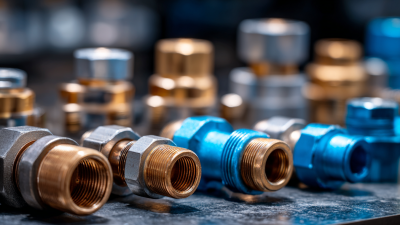
The Ultimate Guide to Press Fittings: Transforming Plumbing with Innovative Connections
-
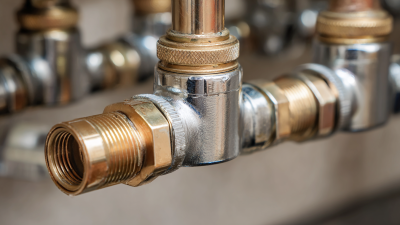
Exploring the Benefits of Compression Fittings for DIY Home Plumbing Projects
-
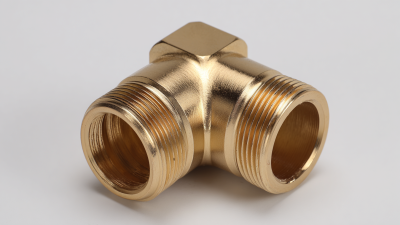
Understanding the Importance of Brass Elbow Fittings in Modern Plumbing Systems
-
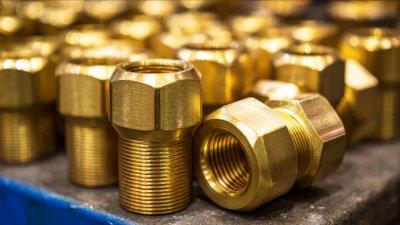
7 Essential Tips for Sourcing High-Quality Brass Elbows in Today's Global Market
-
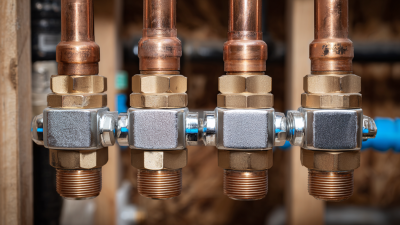
Understanding the Different Types of Compression Fittings in Plumbing
